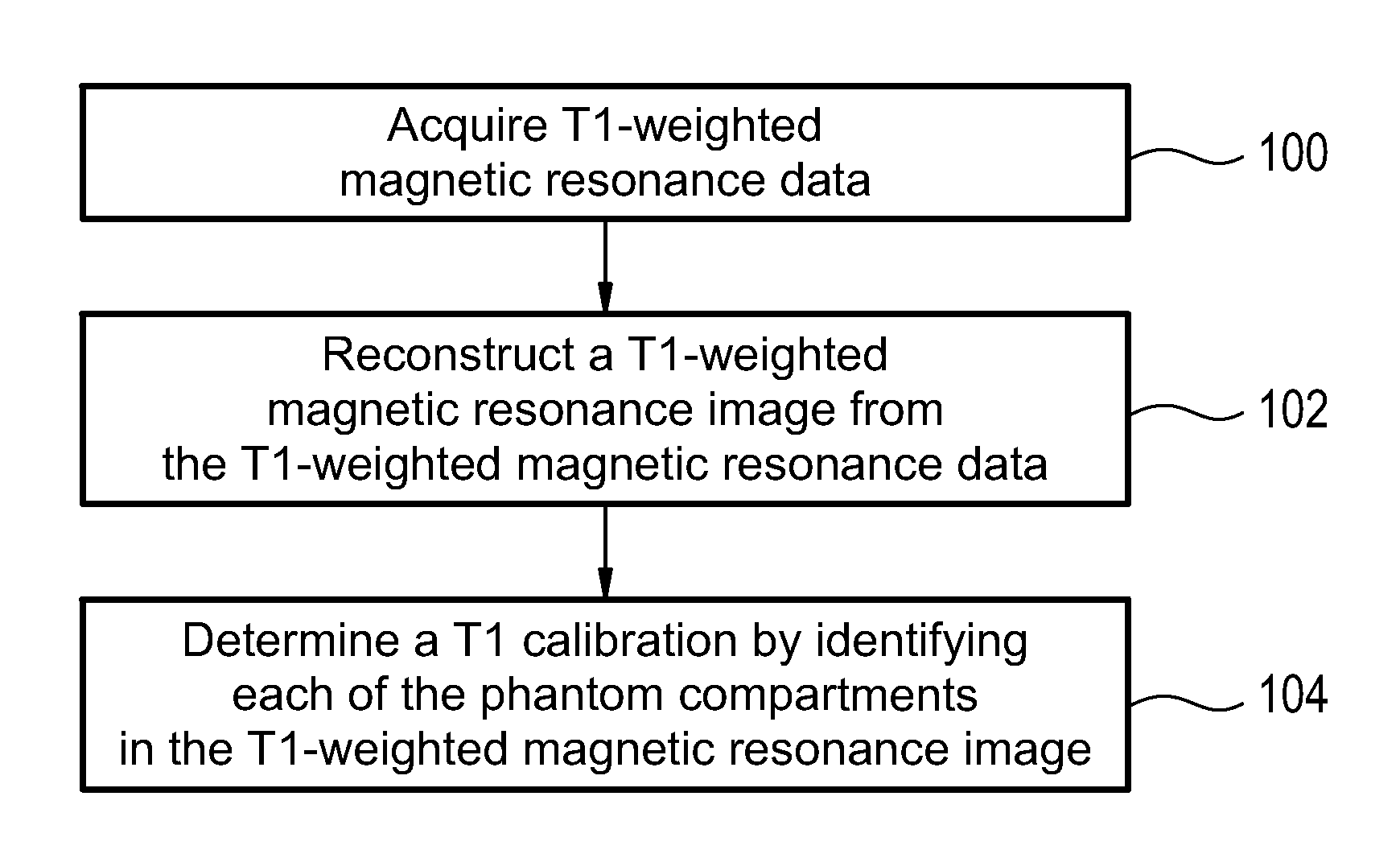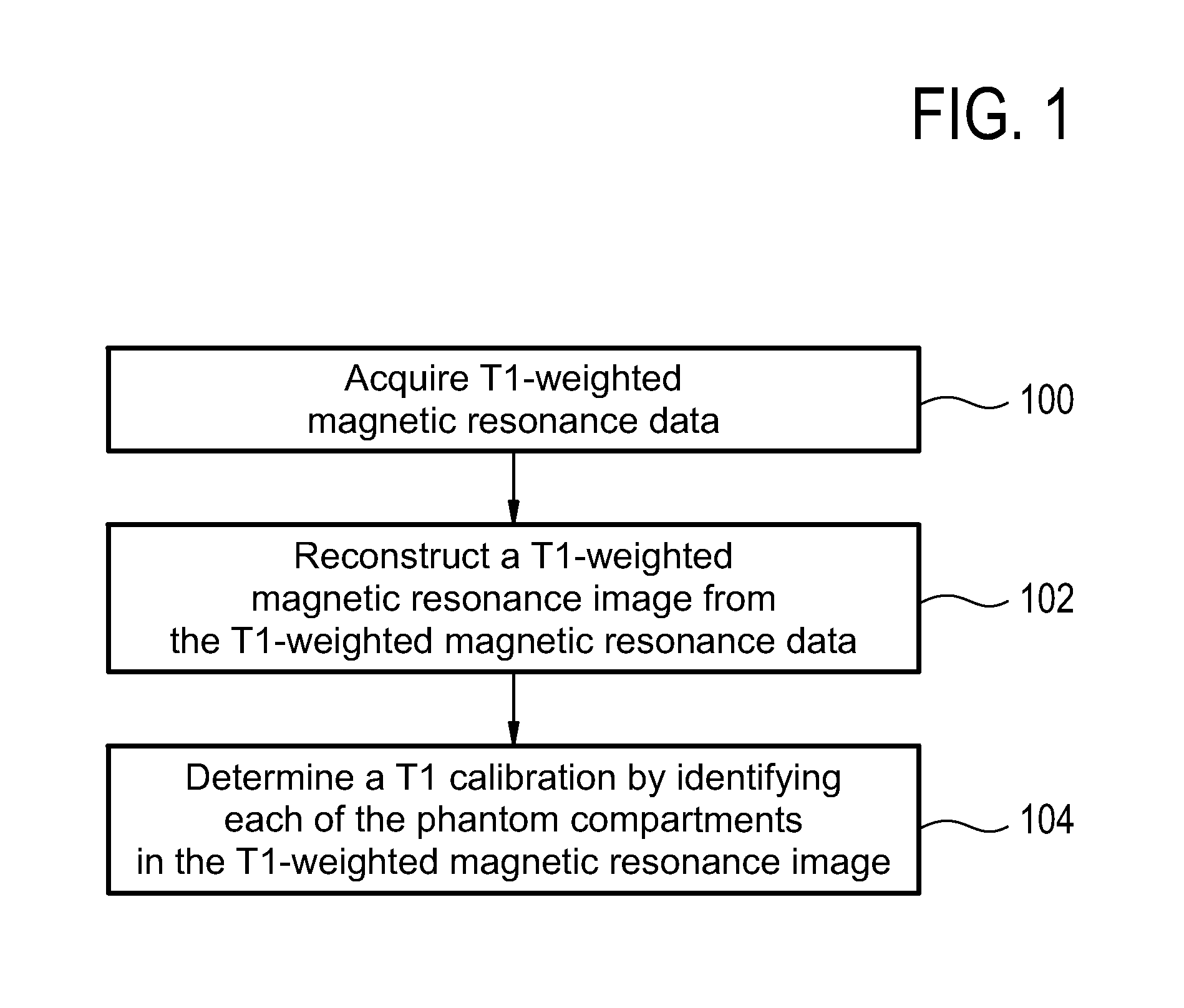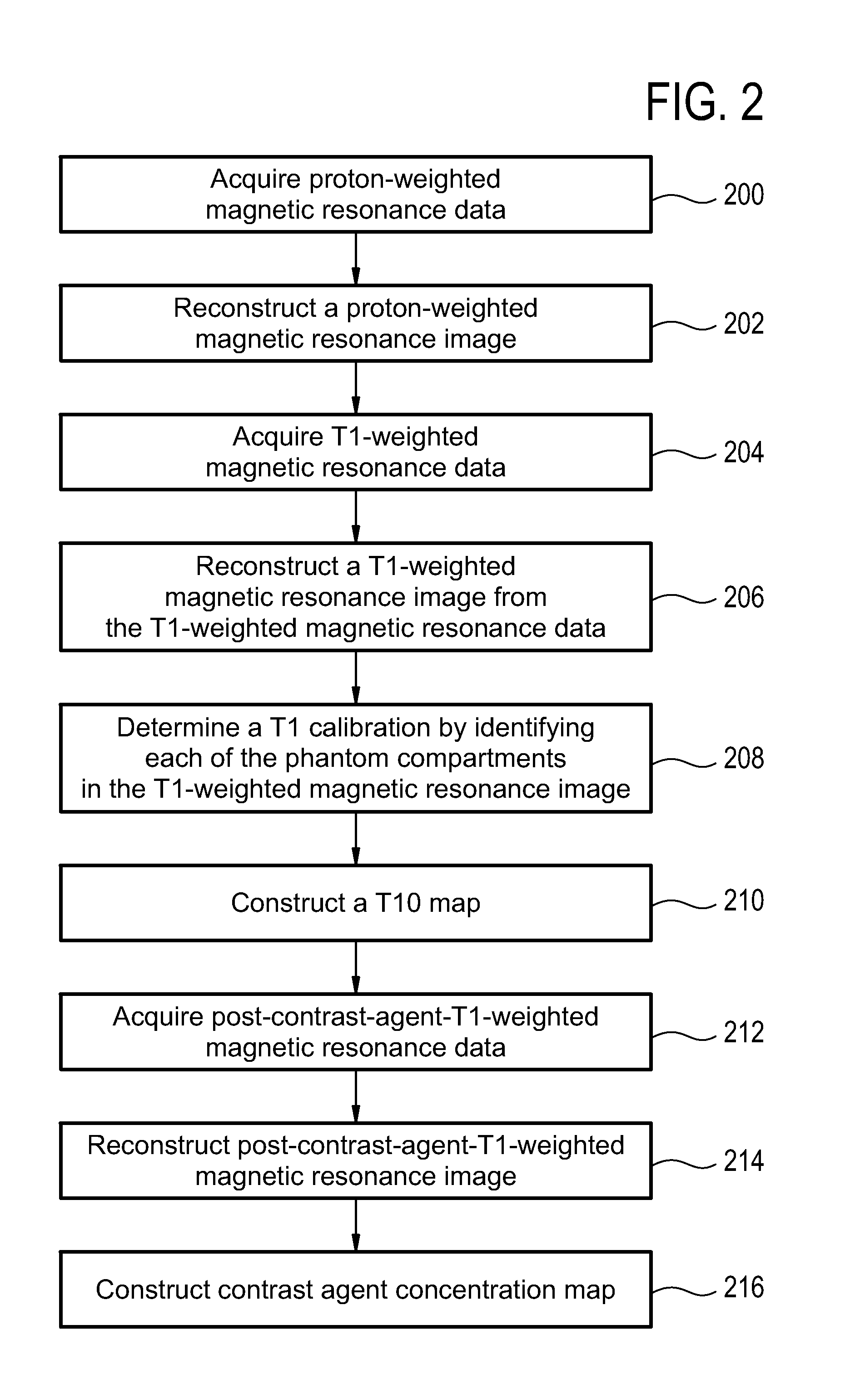MRI phantom with a plurality of compartments for t1 calibration
a magnetic resonance imaging and phantom technology, applied in the field of magnetic resonance imaging, can solve the problems of cumbersome bi-rads, difficult quantitative analysis of the spread of contrast agents through subjects, and total lack of quantitative recommendations
- Summary
- Abstract
- Description
- Claims
- Application Information
AI Technical Summary
Benefits of technology
Problems solved by technology
Method used
Image
Examples
Embodiment Construction
[0065]Like numbered elements in these figures are either equivalent elements or perform the same function. Elements which have been discussed previously will not necessarily be discussed in later figures if the function is equivalent.
[0066]FIG. 1 shows a flow diagram which illustrates a method according to an embodiment of the invention. In step 100 T1-weighted magnetic resonance data is acquired. In step 102 a T1-weighted magnetic resonance image is reconstructed from the T1-weighted magnetic resonance data. Then in step 104 a T1 calibration is determined by identifying each of the phantom compartments in the T1-weighted magnetic resonance image.
[0067]FIG. 2 shows a flow diagram which illustrates a method according to a further embodiment of the invention. In step 200 proton-weighted magnetic resonance data is acquired. In step 202 a proton-weighted magnetic resonance image is reconstructed. In step 204 T1-weighted magnetic resonance data is acquired. In step 206 a T1-weighted magn...
PUM
 Login to View More
Login to View More Abstract
Description
Claims
Application Information
 Login to View More
Login to View More - R&D
- Intellectual Property
- Life Sciences
- Materials
- Tech Scout
- Unparalleled Data Quality
- Higher Quality Content
- 60% Fewer Hallucinations
Browse by: Latest US Patents, China's latest patents, Technical Efficacy Thesaurus, Application Domain, Technology Topic, Popular Technical Reports.
© 2025 PatSnap. All rights reserved.Legal|Privacy policy|Modern Slavery Act Transparency Statement|Sitemap|About US| Contact US: help@patsnap.com



